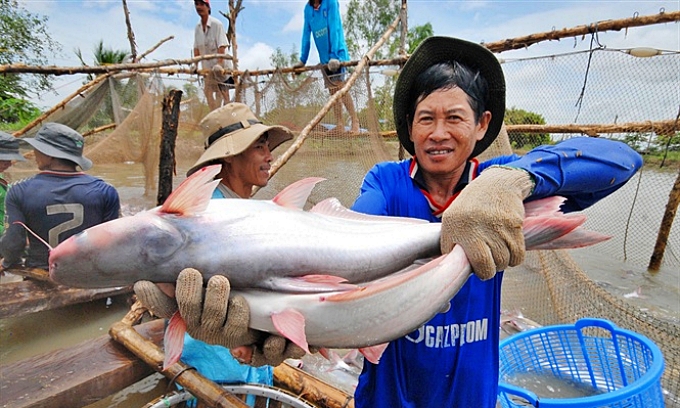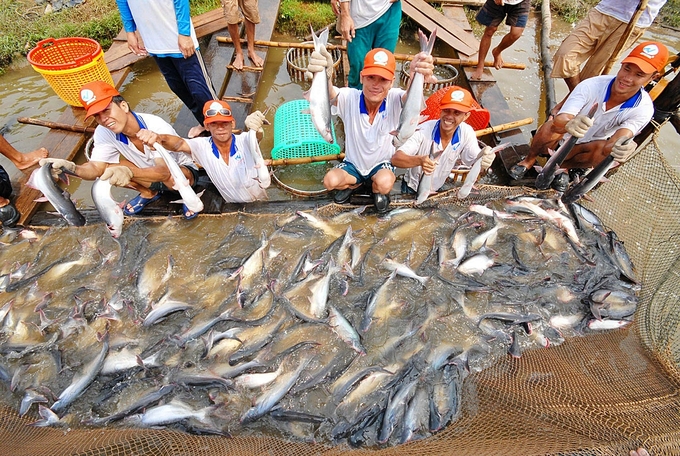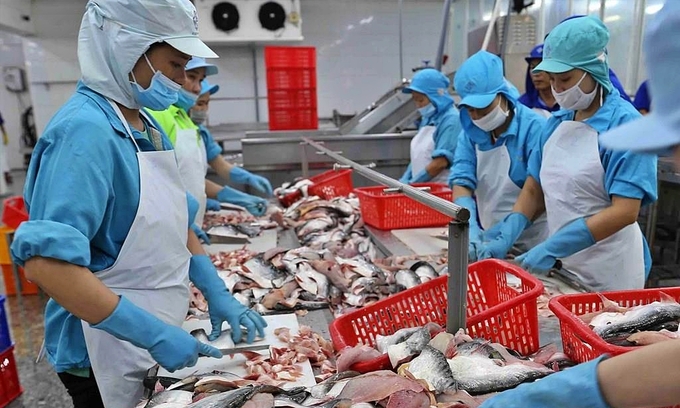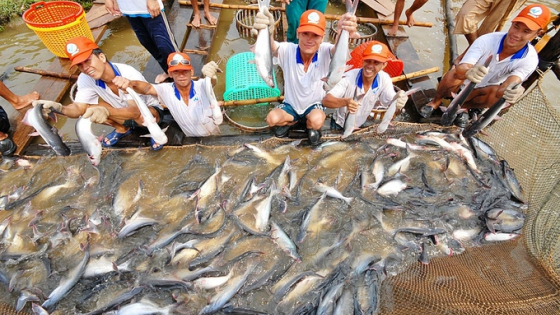(VAN) 2025 is the expected year that pangasius exports conquer new milestones, especially when the global economy tends to recover strongly.

People in the Mekong Delta region are continuously expanding the pangasius farming area.
According to VASEP, Vietnam accounts for over 40% of global pangasius production. Countries such as India, China, and Bangladesh contribute 15-20%.
In 2025, Vietnamese pangasius enterprises are expected to benefit from the agreement between Vietnam and the United States to resolve the dispute over anti-dumping taxes on pangasius and basa fish. Specifically, on January 17, in Washington, the Ministry of Industry and Trade, authorized by the Government, signed a bilateral agreement with its partners to end the dispute in the case at the WTO.
On that basis, Vinh Hoan Joint Stock Company, the only enterprise eligible to have anti-dumping taxes removed under US regulations and also the leading pangasius exporter in Vietnam, was removed from the scope of anti-dumping taxes when exporting to the United States.
Previously, in 2016, Vietnam and the United States signed a bilateral agreement to remove anti-dumping duties on warm-water shrimp products exported to the United States by Minh Phu Seafood Corporation.
After this event, Vietnam’s shrimp exports to the United States grew enormously, and the same is expected to happen with pangasius.
The United States is the second largest market for Vietnamese pangasius exports, after China. This growth has continued since the second half of 2024. In December 2024 alone, pangasius exports to the United States reached nearly USD 28 million, an increase of 40% compared to December 2023.
Accumulated for the whole year of 2024, pangasius export turnover to the United States reached USD 345 million, an increase of 27% compared to 2023, accounting for nearly 20% of the total export value of this item.

Vietnam currently accounts for more than 40% of global pangasius production.
In addition to the direct agreement with the United States, Vietnamese pangasius also benefits from the country’s plan to increase import tariffs on Chinese enterprises – a country that is aiming to increase pangasius production this year and has pledged to participate more actively in the global pangasius supply chain.
VASEP reported that China may reduce exports to the United States if the US’s additional 10% tariff is maintained on all Chinese goods. Vietnamese enterprises have recognized this problem and are considering expanding their product range, including processed tilapia and pangasius.
Besides China, India is also striving to increase pangasius production. However, the size of this country’s fish is generally small, mainly serving the domestic market. In other words, it is not entirely suitable for the US market.
On that basis, VASEP forecasts that pangasius exports may increase by 5-10% in 2025. The reasons lie in the increasing confidence of consumers, the US anti-dumping tax on Vietnamese pangasius being lower than that of other countries, and the price of aquatic feed being on a downward trend.
This prediction is based on the fact that pangasius exports are very favorable, growing strongly since the beginning of 2025. The price of pangasius in domestic ponds has increased to the highest level in the past 3 years, fluctuating around VND 30,000 per kg. The price of products weighing over 1.2kg is even higher due to the popularity of the US and Chinese markets and limited supply (about 5%).

By 2025, Vietnam is expected to enjoy tariff advantages over other countries when exporting to the United States.
Along with the high consumption demand in China (due to the Lunar New Year), pangasius exports in January 2025 are estimated to bring in USD 209 million, an increase of 27% compared to January 2024. If this rate is maintained, the 5-10% export growth target is reasonable. In 2024, pangasius exports will reach USD 2 billion, an increase of 9% compared to 2023.
In addition to the United States, pangasius exports to the CPTPP market block also recorded a growth of 10% in 2024, with more than USD 274 million. The most impressive is Mexico, reaching USD 76 million, an increase of 4% compared to 2023, and is the leading country in the block in importing Vietnamese pangasius.
In terms of export products, frozen pangasius fillets remain the main product, with an export value of USD 1.6 billion in 2024. Processed products grew by 45%, reaching USD 43 million. Exports of dried pangasius and other frozen products (whole, cut, etc.) reached USD 357 million, up 23% over the same period in 2023.
VASEP commented that 2025 promises to be when pangasius exports conquer new milestones. Because both the United States and China maintain a stable growth momentum. In 2024, China and Hong Kong are the leading destinations for Vietnamese pangasius, reaching a turnover of more than USD 580 million, a slight increase of 1.3% compared to 2023.
In the report on the world economy in 2025, the World Bank said that the global economy will continue to recover. Demand in significant markets begins to increase enormously. This will be an essential driving force to help Vietnamese pangasius develop.
Agriculture News | Agri Products Price



